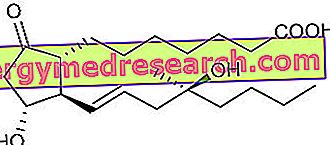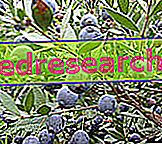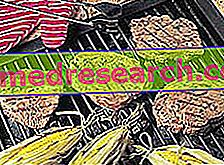What's this ?
Claudicatio intermittens is the term that doctors attribute to a pain, usually described as muscle cramp, which typically affects the calf, getting worse with exercise and relieving with rest.

Causes
Most often, intermittent claudiacation is the typical manifestation of peripheral occlusive arterial disease. It is a morbid process that evolves slowly, leading to the formation of atheromas in the walls of large arterial vessels [the atheromas are lipid accumulations (cholesterol and fatty acids), cellular debris (especially macrophages), calcium salts and connective tissue]. This pathology, called atherosclerosis, is called peripheral arterial arterial disease when atheromas compromise the normal blood flow at the limbs, with serious repercussions on the functional capacity and quality of life of the patient. Although this lameness can be triggered by other causes, such as stenosis of the vertebral canal, in this article we will deal with its link with peripheral occlusive arteriopathy.
Symptoms
To learn more: Symptoms Claudicatio intermittens
The typical manifestation of intermittent claudication lies in the very meaning of the term, which we could Italianize into intermittent lameness . The patient complains of cramping pain during walking, located at the level of the calf when the femoro-popliteal artery is involved, or at the level of the hip or buttock when the iliac artery is involved. Typically, pain is relieved by rest, whereas when it lasts long even at the end of physical exercise, vascular occlusion is particularly severe. The painful symptoms, as it is easy to understand, depend on the insufficient blood flow under stress, so the muscle begins to work in anaerobiosis with the appearance of lactic acid and pain; if we want it is the same phenomenon that limits athletic performance in perfectly healthy subjects. Just as these athletes can improve their performance through regular exercise, even individuals who suffer from intermittent claudication can greatly improve their physical condition by performing the activity most appropriate to their state of health.
Occlusive peripheral arteriopathy can be divided into four stages:
- I stage: absence of claudication ;
- Stage II: presence of intermittent claudication :
- IIa: distance traveled in the absence of lower pain of at least 150 meters;
- IIb: distance traveled in the absence of pain less than 150 meters;
- Stage III: intermittent claudication with peripheral pain at rest;
- Stage IV: intermittent claudication with peripheral tissue lesions (necrosis, gangrene).
Other symptoms that can accompany the intermittent claudication are sexual impotence, the decrease or absence of distal pulses, pallor, cyanosis and coldness of the extremities, reduced tolerance to physical efforts, peripheral paraesthesia (tingling), the hair loss, thinning of the skin and thickening of the nails.
Risk factors
- obesity,
- smoke,
- hypertension,
- prediabetes,
- diabetes,
- old age,
- hyperlipidemia,
- iperfibrinogemia.
Diagnosis
The diagnosis is based on the search for the above-reported symptoms and signs, with diagnostic confirmation through the systolic pressure index at rest and under stress (ratio between arterial pressure measured at the ankle and arm), eco-color-doppler, angiography or angio RM.
Useful for establishing an adequate treatment, the plasma dosage of HDL, LDL, and total cholesterol, triglycerides, fibrinogen and blood glucose.
Treatment
See also: Drugs for the treatment of intermittent claudication
Treatment of intermittent claudication depends on the severity of lameness. Some general measures, such as dietary - behavioral, are valid a bit for all the clinical-evolutionary stages, while others are specific. General interventions include the abolition of smoking, the moderation of alcohol and the dietary correction of dyslipidemia, hyperglycemia, hypertension and overweight (see: diet and diabetes, diet and atherosclerosis, diet and hypertension) . Physical activity is perhaps the best medicine, also due to the few side effects; one should therefore avoid falling into that vicious circle by which, due to the lameness that accompanies it, the level of physical exercise is progressively reduced. Nothing could be more wrong; when the walk causes particularly debilitating problems, you can try with the bicycle (maybe the recumbent one), or vice versa; alternatively, water activities can be useful. All of this, of course, with the advice of an expert in the field (physical activity, like a real drug, may for example require a reduction in the dose of medicines taken at the same time).
Drug therapy can use platelet aggregation inhibitors, cholesterol-lowering agents, vasodilators, anti-hypertensive and hypotriglyceridemic agents. In the phytotherapeutic field, ginkgo biloba is the drug par excellence in the treatment of intermittent claudication ; even garlic can help. In both cases the discourse made for physical activity applies: the spontaneous use of these preparations must be condemned and the preventive medical consultation encouraged.
In severe cases, the Claudicatio intermittens may require bypass surgery or angioplasty techniques.



